Aromatherapy is gaining attention as consumers find healthier ways to calm the body and mind. This increasing potential for business is also attracting the eyes of several retailers hoping to plunge into the market.
Aroma diffusers maximize the effects of aromatherapy and work similarly to humidifiers. But instead of spraying moisture, this device distributes oil fragrances. However, the sheer number of types is enough to leave any seller worried about where to start.
This article breaks down the various diffuser types consumers love and factors to consider before bulk purchasing.
Table of Contents
The various types of diffusers available
Seven factors to consider before buying aroma diffusers
A summary of the aroma diffuser market
Final words
The various types of diffusers available
Water diffuser
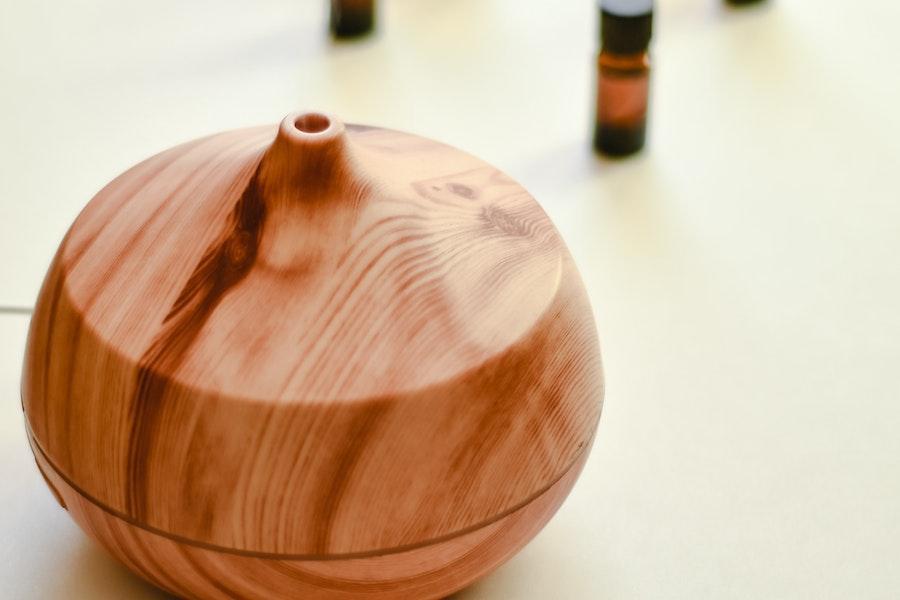
Water diffusers are what come to mind when consumers think about aromatherapy. They’re incredibly common and an affordable way to dabble in the diffuser market.
These diffusers have basins consumers can fill with water and their preferred oil fragrance. Water diffusers also generate mist that can double down as humidifiers.
As for their mode of operation, they utilize ultrasonic waves to disperse the water/oil mixture in a wide area. Depending on the size, water diffusers may be perfect for large spaces.
The size determines the runtime of water diffusers. Punier variants will have shorter operating times, while larger models will last longer. These machines also have automatic shutdown features that are triggered when the basin is empty.
Nebulizer
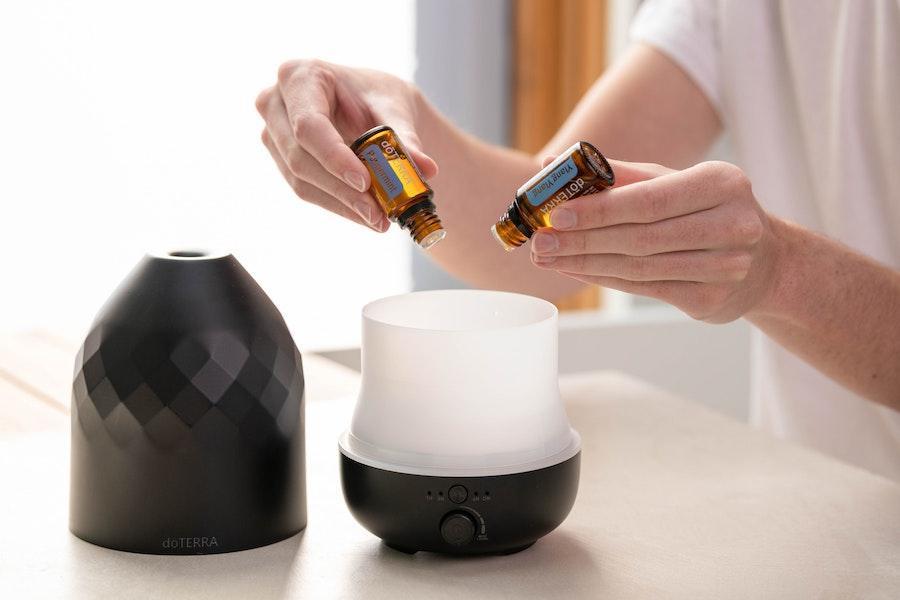
Nebulizers offer a 100% natural aromatherapy experience. These devices can break down oil fragrances into smaller molecules for easy dispersal. Nebulizers also offer the natural benefits of essential oil since they don’t use water.
They also have pumps determining molecule breakdown speed and the dispersal coverage area. Some nebulizer diffusers can connect to a home’s HVAC system, allowing the device to distribute fragrances to every corner of the house.
On the negative side, cleaning nebulizer devices may be tricky and time-wasting, as they require regular cleaning. Further, the pieces require greater care than other humidifiers to avoid unwanted damage and expenses.
Poor maintenance can affect the diffuser’s effectiveness and clog pumps with accumulated essential oils.
Reed

These diffusers are not electric or fancy. Using reed aroma diffusers involves placing reeds or wooden sticks into a fragrance or essential oil bottle.
The reeds will soak up the oil before releasing the scent into the air. Reed diffusers will spread fragrance as long as oil remains in the bottle.
Reed diffusers don’t possess any of the traditional diffuser characteristics. They don’t create scented mists, require electricity/water, or generate heat. These diffusers also need little maintenance.
Although reed diffusers work in any room size, they’d be more effective in smaller spaces. Note that consumers will need to switch reeds when using different scents or bottles.
Fan-style diffuser
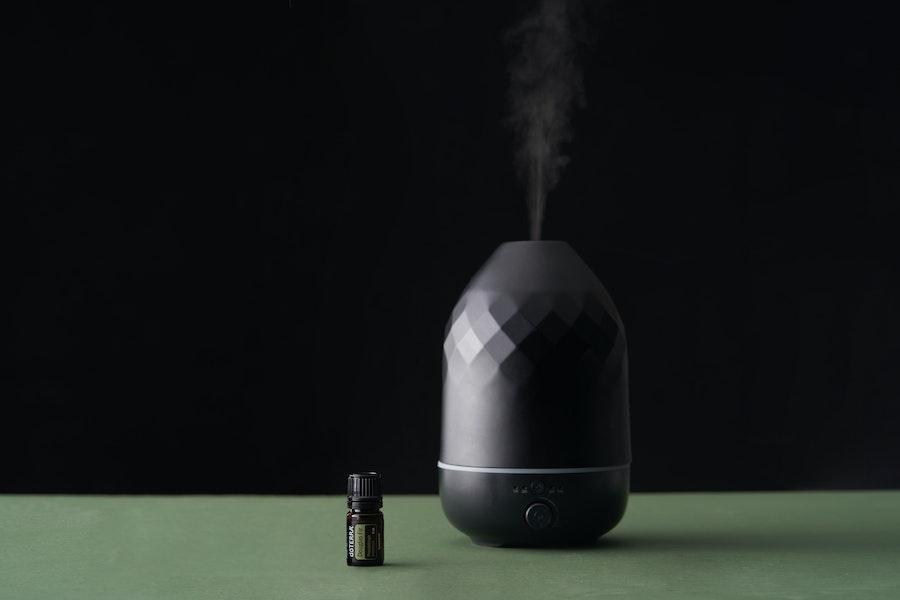
This option also offers the natural properties of essential oils. Also, it doesn’t need water, meaning the oil remains undiluted. Fan-style diffusers have internal units where consumers can place fragrant oils. Usually, it’s an absorbent pad or a tray.
The fan inside the diffuser unit will gently disperse the oil’s scent over a wide area. Fan-style diffusers feature various sizes. They can also spread fragrances in small rooms or the entire house. However, smaller trays or absorbent pads won’t last as long as larger ones.
Oil scent duration also depends on the amount placed on the tray. Dissipating scents are an indication that it’s time to add more oil.
Terracotta diffuser
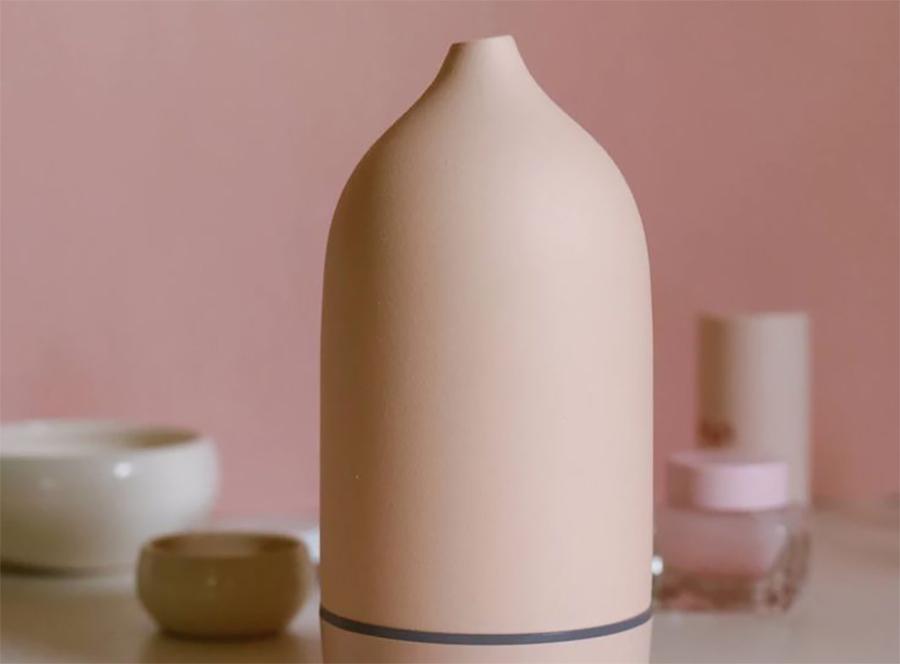
Terracotta diffusers use pretty clay pots or bottles closed with a cork to retain oil. The essential oil will permeate the stone or clay and slowly diffuse into the atmosphere.
This method may be natural, but there’s no way to distribute the fragrance evenly. Terracotta diffusers provide the strongest scents immediately after placing the oil inside, and the aroma will slowly disappear over time.
Cleaning terracotta diffusers may be problematic since the clay soaks the oil. Changing scents may cause unwanted mixtures, so consumers prefer getting different pots for each fragrance.
Electric heat diffuser
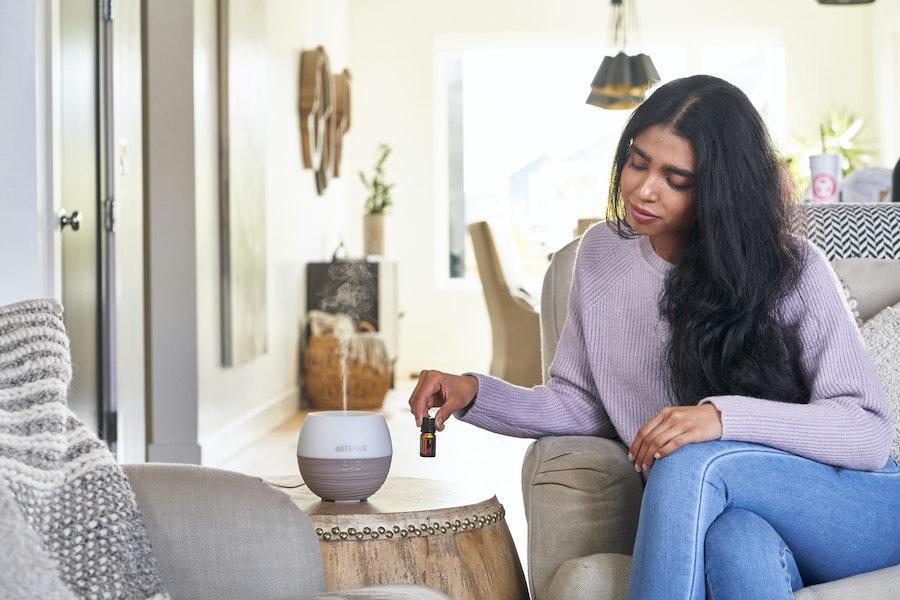
Electric diffusers look and feel like teacup saucers. They have slight indentations in the middle for placing essential or fragrant oil.
The diffusing process starts when the device heats up using electricity. Then, the diffuser will warm the oil and spread the fragrance throughout the room.
An electric heat diffuser’s size determines the scent coverage. In addition, the fragrance will stop spreading once the oil evaporates. Adding more oil will start the process again.
These oil diffusers are also easy to clean. Soft cloth, mild soap, and warm water will be enough to remove any oil residue or buildup.
Candle diffuser
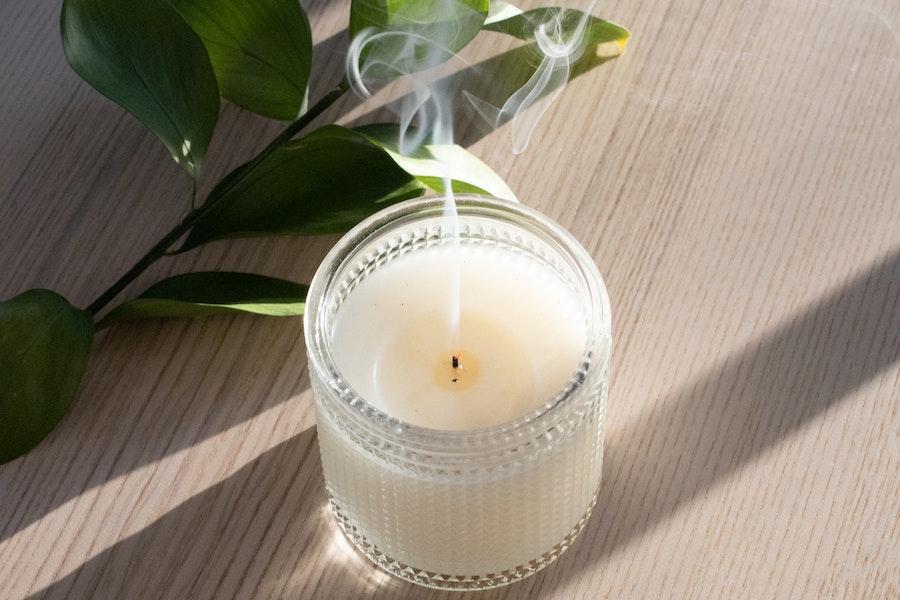
These devices are similar to their electric counterparts but use candles as heat sources instead of electricity. The candle’s flame will warm the oil and spread the scent to every corner.
Candle diffusers feature various sizes and designs. Some have eye-catching aesthetics that can double down as decorative pieces.
Although this diffuser doesn’t run off batteries or electricity, swapping candles is crucial when one burns out. Also, avoid adding scented candles to prevent clashing fragrances.
Seven factors to consider before buying aroma diffusers
Tank size
Diffuser size and dimension are crucial factors determining various things. Some types with smaller sizes won’t last longer than larger models.
Although minuscule aroma diffusers are mobile, they may offer low coverage. But they’re good enough to create a personal oasis when traveling. Bigger variants are ideal for consumers with larger spaces.
Noise level
Not all diffuser types generate noise. Models with bulky fans, for instance, may end up causing some noise.
Most buyers prefer models creating soft hums, but for those who love total silence, offer non-electrical variants as they normally don’t make noise and won’t interfere with the consumer’s tranquility.
Opt for diffusers with less than 23 decibels of noise output to be on the safer side.
Accessories
Diffuser accessories vary according to type. Sellers can offer remote control, LED lights, glass covers, ambient light, air vent devices, replacement wicks, auto shutoff, and many others.
These extra functions make aroma diffusers more appealing, especially for those looking for a smooth experience.
Vapor output range
Some aroma diffusers offer adjustable features to control how much fragrant mist spreads into the air. Greater vapor output ranges mean a more prominent oil fragrance.
Weight and dimension of the diffuser
Weight works hand in hand with size. The bigger the diffuser, the heavier it will be. However, bulky aroma diffusers translate to more oil capacity and longer runtimes.
Coverage area
Some diffusers may cover small closed areas (approx. 150 square feet), an average bedroom (215 square feet), a medium room (300 square feet), or a large room (700 square feet).
Duration of operation
Operation time is another varying factor present in diffusers. Standard models have a fixed 5 hours runtime, while some USB variants can operate for up to 20 hours. However, the device will spread fragrance at intervals of 60, 30, or 10 seconds.
Note: Quality diffusers should have operation time control.
A summary of the aroma diffuser market
The global aroma diffuser market had a $1.8 billion value in 2021. Despite the several setbacks, marketing experts forecast the industry will exhibit a CAGR of 7.85% from 2022 to 2027.
The aromatherapy market owes its growth to the increasing presence of spas and wellness centers in regions like Europe, Asia Pacific, and North America. The increase fueled the demand for aroma diffusers as consumer interest peaked at an all-time high.
Final words
Aromatherapy offers tons of health benefits. The diffusers can elevate a dull room to a pleasant one. In addition, lovely scents also influence good thoughts and disposition.
These benefits draw consumer attention toward aromatherapy, creating profitable ground for retailers. But businesses must invest wisely to avoid losses and excess inventories.
Focusing on water, nebulizer, reed, fan-style, terracotta, electric heat, and candle diffusers is a perfect way to ease into the market while making the most attractive offers.




